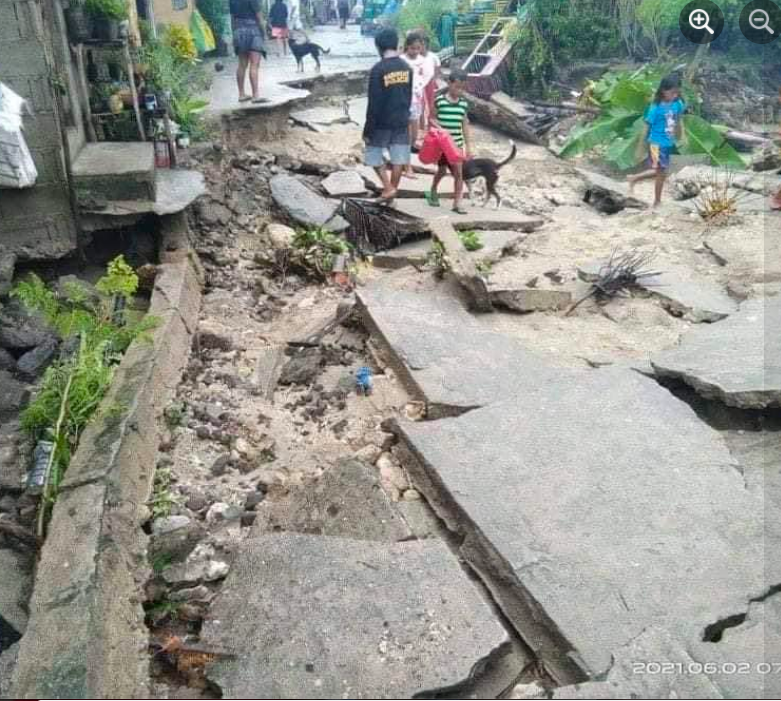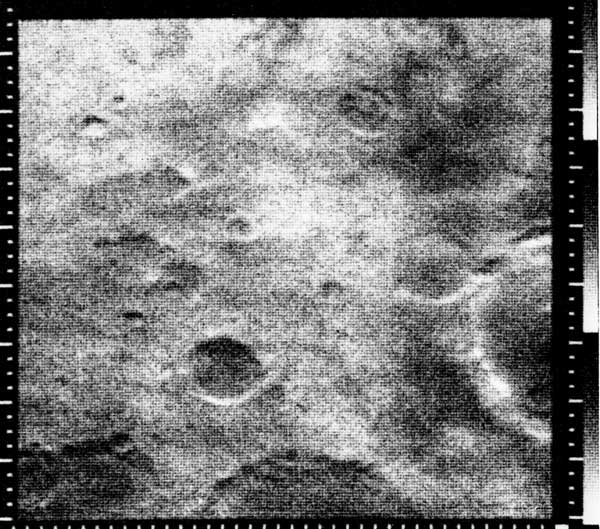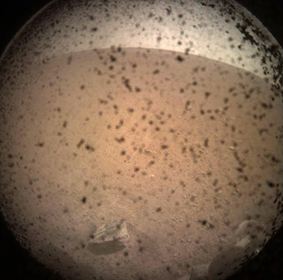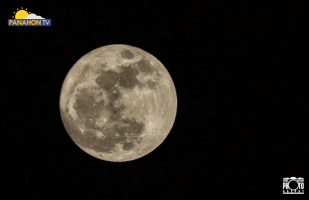Just three days after the World Meteorological Organization (WMO) announced that La Niña had ended, the Philippine Atmospheric, Geophysical and Astronomical Services Administration (PAGASA) announced the onset of the rainy season last June 4, 2021.
From October 2020 to March this year, a weak and moderate La Niña, which refers to the cooling of ocean surface temperatures, prevailed in the country. Coupled with the Northeast Monsoon or Amihan, it was predicted to bring above-normal rain conditions, which were seen in previous typhoons. On November 1 last year, Super Typhoon Rolly, 2020’s strongest tropical cyclone in the world, devastated 8 regions including Bicol. Floods, mudslides and storm surges affected 2 million people. In the same month on the 11th, Typhoon Ulysses struck Central Luzon, causing massive floods and landslides.
Now, the Southwest Monsoon or Habagat—warm and moist air that speeds up cloud formation that causes rainfall—has become the dominant weather system in the country. This is one of the factors that prompted PAGASA to declare the start of the rainy season. In a press statement, PAGASA administrator Dr. Vincent Malano explained, “The passage of Tropical Storm Dante and the occurrence of widespread rainfall in the last five days for areas under Type 1 climate confirm the onset of the rainy season. Intermittent rains associated with the Southwest Monsoon will continue to affect Metro Manila and the western section of the country.” The western parts of Luzon, Mindoro, Negros and Palawan fall under the Type 1 climate category.
 Massive flooding in Romblon due to the torrential rains brought by #DantePH. (Photos from PIA-Romblon)
Massive flooding in Romblon due to the torrential rains brought by #DantePH. (Photos from PIA-Romblon)
The End of La Niña Does Not Spell Safety
With La Niña ending last June 1, WMO said that “neutral conditions are likely to dominate the tropical Pacific in the next few months.” PAGASA hydrologist Rosalie Pagulayan further explains, “There’s no La Niña, no El Niño, which means wind conditions have returned to normal. So, we can expect a normal amount of rainfall from June to September in the whole country.”
But as with everything related to the weather, nothing is set in stone. In WMO’s press release, the chance of neutral conditions continuing until July is at 78%. This decreases to 55% by August to October, while conditions are uncertain for the rest of the year.
Despite this high chance of neutral conditions, PAGASA warned that “The probability of near to above-normal rainfall conditions is high in the next two months (June-July.) The public and all concerned agencies are advised to take precautionary measures against the impacts of the rainy season.” Simply said, the end of La Niña does not mean that the country will be safe from tropical cyclone risks. “We can’t discard the possibility of extreme events,” says Pagulayan. “Our mindset should always be disaster preparedness.”
The Philippines is the country most-visited by tropical cyclones in the world. Here, the rainy season is synonymous with typhoons and floods. “This month of June, PAGASA forecasts that we may experience 1 to 3 tropical cyclones. Usually, tropical cyclone occurrences peak from July to September.” Though PAGASA announced there will be monsoon breaks or non-rainy periods which may last for days or weeks, Pagulayan stressed that we are currently in the thick of typhoon season.
 (source: PAGASA)
(source: PAGASA)
How Manmade Activities Worsen Natural Disasters
But despite the absence of La Niña, Tropical Storm Dante caused flash floods and landslides in Visayas and Mindanao earlier this month. The National Disaster Risk Reduction and Management Council (NDRRMC) reported 11 deaths and over 122,000 people affected. Damage in agriculture was pegged at over ₱90 million, while infrastructure damage was over ₱130 million. “The amount of rainfall Dante produced was staggering and unexpected,” admitted Pagulayan. “In my opinion, the change in landscape may have been a major contributor.”
 Aftermath of tropical storm #DantePH at Barangay Cabil-isan in Daram, Samar. (Photos courtesy of Slug Rosales)
Aftermath of tropical storm #DantePH at Barangay Cabil-isan in Daram, Samar. (Photos courtesy of Slug Rosales)
Pagulayan refers to the altered natural environment brought about by human acts such as deforestation and development projects. In an earlier interview, Dr. Renato Solidum Jr, officer-in-charge of the Philippine Institute of Volcanology and Seismology, and undersecretary for Disaster Risk Reduction and Climate explained how manmade activities can worsen disaster impacts. “Landslides occur in steep places or those with soft ground. Destroying our mountains through deforestation or housing developments leads to faster erosion and lowland flooding. The eroded soil along with improper waste disposal fill up our rivers and drainages, also causing floods.”
WMO echoed this statement by saying that now that La Niña has ended, climate events are now in the hands of human-induced climate change. “La Niña has a temporary global cooling effect, which is typically strongest in the second year of the event. This means that 2021 has got off to a relatively cool start – by recent standards. This should not lull us into a false sense of security that there is a pause in climate change,” said WMO Secretary-General Prof. Petteri Taalas.
Taalas warned that carbon dioxide concentrations in the atmosphere remain high, fueling global warming. In fact, WMO predicted a 90% chance of at least one year between 2021 to 2025 to become the warmest on record. Soaring temperatures mean warmer oceans, which spell disaster. This, Pagulayan confirmed in a previous article. “Warmer oceans result to more evaporation. When there’s more moisture in the atmosphere, this may result in intensified tropical cyclones,” she said. “This means stronger rains, storm surges, and the possibility of tornadoes. Coastal communities will be inundated even those that do not usually experience floods. Heat waves may occur. While some parts of the country may experience droughts, other parts will receive excess rainfall. The greatest impact is on food production.”
Preparedness as a Personal Responsibility
It’s the second year we, Filipinos, find ourselves grappling with both the typhoon season and the COVID-19 pandemic. While this makes the management of evacuation centers challenging, Pagulayan stresses the importance of being pro-active when it comes to preparedness. “Let’s not rely solely on the government for our safety. Let’s ask ourselves what we an contribute.” She gives the following tips:
- Coordinate and work with your community’s disaster manager. Your community’s topography and needs are unique. You, your fellow-residents and barangay leaders can best map out a preparedness plan for your community.
- While staying alert to advisories released by your community’s disaster office, it’s also advisable to read updates from national agencies. Read the reports and listen to expert interviews. The additional knowledge boosts your preparedness by helping you form a bigger picture of possible scenarios.
- If you need to evacuate, always remember to bring a Go Bag. “This includes everything you need for the first 6 hours in the evacuation center,” says Pagulayan. Keeping yourself safe as an individual is a form of community service.

More and more Filipinos are going hungry. This is according to the Rapid Nutrition Assessment Survey conducted by the Food and Nutrition Research Institute (FNRI) late last year. After surveying almost 6,000 households all over the country, FNRI reported that 62.1% of families experienced moderate to severe food insecurity.
When does a household qualify as being “food insecure”? The FNRI gives the following criteria:
- Worrying about food
- Inability to eat preferred foods
- Only able to eat a few kinds of foods
- Eating foods they do not desire
- Eating smaller portions
- Eating fewer meals daily
- Absence of food in the household
- Going to sleep hungry
- Going through a whole day without sustenance
The COVID-19 pandemic seems to be the cause of this hunger spike. FNRI states that more than half of surveyed households reported having less access to food during community quarantine because of: 1) lack of money, 2) limited public transportation, 3) job loss, 4) limited food stores in their area, and 5) being an elderly with no family members to help them buy food.
But food security may be achieved through one’s own efforts. Last year, FNRI posted a call for Filipinos to grow their own food during the pandemic. This way, households are assured of food supply despite limited mobility. This is especially true in urban areas, which are “less likely to consume fresh produce, which are good sources of vitamins and minerals that boost immunity.
 Kangkong harvest (photo by Chie Roman)
Kangkong harvest (photo by Chie Roman)
Being a Farmer in Your Own Backyard
The terms “plantito” and “plantita” became popular during the lockdown as Filipinos turned to gardening to care for their mental health. The challenge now is to shift the focus from greens that beautify the home to edible plants.
According to PAGASA, the hot and dry season this 2021 would be shorter than the previous years’. This may be considered good news because in a Panahon TV interview, Agriculturist Lito Bollosa from the Bureau of Plant Industry said that both the onset and end of the rainy season is the most ideal time to plant.
However, one can still start planting during the hot and dry season. “When it comes to vegetables, we can plant the ingredients of the pakbet. These are indigenous crops that can survive adverse conditions and the constant changes in weather,” Bollosa explained in Filipino.
Bollosa states that crops which require minimal supervision and water include:
- talong
- kamatis
- sili
- gabi
- ube
- kamote
- kamoteng kahoy
- mani
- munggo
- soybeans
Aside from being low maintenance, these crops are also easy to plant. “With indigenous vegetables like alugbati, kangkong, and kamote, you only need to stick the cuttings into the soil. With just a little water, they can already survive,” said Bollosa. He added that other crops that are able to survive intense heat include mung beans, corn—and dragon fruit, which belongs to the cactus family and therefore doesn’t require a lot of water.
Meanwhile, fruits that take center stage this hot season are watermelon and mangoes. “We see an increased production of fruits and vegetables now because of the sun’s constant presence. These crops need sunlight to produce their own food. The excess nutrients end up as fruits.”
However, extreme weather conditions may also cause plants to flourish. This is because of their need for survival, causing them to release more antioxidants and other protective chemicals. “Prolonged heat or rains can cause plant stress,” shared Bollosa. “For example, when the calamansi experiences excess heat or rains, it tends to produce more flowers and fruits.” This technique is used in farming to boost fruit production. Bollosa elaborated, “Fruits like rambutan, lanzones, and avocado flower during the hot season. After the ‘ber’ months, they are subjected to heat to induce flowering.”
 According to Bollosa, calamani produces more fruit when stressed. (photo by Chie Roman)
According to Bollosa, calamani produces more fruit when stressed. (photo by Chie Roman)
Planting Tips
Before planting your own food, Bollosa suggests these tips:
- Research if the plant you want to grow is compatible with your location. Climate plays an important role in agriculture. Highland crops flourish in cold weather, while lowland crops can stand the literal heat with the help of technology.
- Plant in the right soil. “Start with a soil mixture,” advised Bollosa. “You can mix carbonized rice hull or charcoal to boost its carbon content. This allows your soil to absorb more moisture.”
- Use a planting pit. A planting pit is filled with organic materials such as dried leaves, grain stalks and other vegetative material that enriches the soil. The pit is dug close to crops to increase soil fertility and moisture retention.
- DIY the process. In urban areas wherein planting is confined to small spaces, Bollosa suggests using downscaled agricultural practices. Examples are covering pots with newspaper or cardboard to prevent water evaporation; and punching holes in plastic bottles so they can irrigate crops without drowning the soil.
 Growing young ginger (photo by Chie Sales)
Growing young ginger (photo by Chie Sales)
Following the Planting Calendar
To be able to successfully grow food, Bollosa stressed the importance of following the planting calendar. Certain plants grow their best in specific months of the year. The Department of Agriculture released a comprehensive planting calendar, which Panahon TV condensed below:
| All Seasons | End of Rainy season to Cool and Dry Season |
ampalaya | upo |
Bataw | broccoli |
| kangkong | Chinese cabbage |
lettuce | labanos |
mustasa | patani |
okra | muskmelon |
| pechay | potato |
| sitaw | squash |
By following nature’s rhythm, you can reap the benefits of growing your food. Aside from getting the nutrients your immune system needs, you are ensured of your food’s safety and quality. Planting can also help you save money, protect the environment, and boost your household’s food security. You can enjoy all these rewards, while taking part in one of the greatest miracles—nurturing another life besides your own.
Watch Panahon TV’s interview with Lito Bollosa here.
After the Quadrantids Meteor Shower last January 4, the skies will once again be illuminated by another major astronomical event—the Penumbral Lunar Eclipse.
Eclipses come in pairs
A solar eclipse is always paired with a lunar eclipse. A solar eclipse only happens during the new moon, while a lunar eclipse occurs during the full moon. For an eclipse to occur, the new and full moons have to take place within the eclipse season, wherein the Earth, Sun, and Moon are perfectly aligned. This happens twice a year, about six months apart.
What is a Penumbral Lunar Eclipse?
On January 11, 2020 at 1:07 a.m., the Penumbral Lunar Eclipse will be visible in the country. It occurs whenever the Earth passes between the Moon and the Sun, blocking out sunlight and casting a shadow on the Moon’s surface.
Unlike other types of eclipses, a Penumbral Lunar Eclipse is more subtle and much more difficult to observe. According to Fred Espenak, an American Astrophysicist, about 35% of all eclipses are penumbral. Another 30% are partial eclipses, while the remaining 35% are total eclipses of the moon.
Where will the Penumbral Eclipse be visible?
The eclipse will be visible in Africa, Oceania, Asia, Europe, and Northern America.
In Manila, the Penumbral Lunar Eclipse starts at 1:07 a.m., reaching its peak at 3:11 a.m. and ending at 5:12 a.m. The next eclipse for the year will be visible on June 6.
Can We Live on Mars?
Can other planets supporting life? Are we alone in this vast universe? These are some of the questions curious minds are interested in. And it’s this intense kind of curiosity that has led to one of our most ambitious space projects, the Mars Exploration.
Meet Mars
Mars is sometimes called the “Red Planet”. It’s red because its surface has iron oxide or rusty particles. Its only half size of Earth and like our planet, Mars has volcanoes, weather, seasons, polar ice caps and canyons. Its thin atmosphere is made of nitrogen, argon and carbon dioxide. These characteristics encouraged scientist to dig deeper into Mars’s history to find out if it once supported life – and maybe able to in the future.
The Mars Mission
So far, almost 50 spacecraft have visited Mars, but not all of them were successful in landing on its surface or in orbiting around the planet. Mars is the only planet scientists have sent rovers to –. These vehicles drive around the planet to take photos and measurements.
Scientists begun to send probes to the red planet in 1960. But Mars Exploration Program funded and led by the National Aeronautics and Space Administration (NASA), officially begun in 1994. The first six spacecraft all failed to reach Mars orbit.

Courtesy: NASA
Mariner 4 was the first successful flyby attempt that entered the planet’s orbit, arriving on July 14, 1965. This mission provided the first close up images of the planet.
The most recent successful landing on Mars happened just last November 2018. The Interior Exploration using Seismic Investigations, Geodesy and Heat Transport (InSight), is a robotic lander designed to study the deep interior of the planet and to listen to Marsquakes.
The Possibilities of Mars
Scientist are exploring Mars to determine if life ever arose on Mars, to characterize its climate and geology; and ultimately, to prepare for the human exploration of Mars. The Mars Exploration Program is a science driven program that seeks to understand whether Mars was, is, or can be, a habitable world.

Courtesy: NASA
Terraforming is the primary ingredient of the concept of Mars – colonization. This is a speculative course of alteration of the conditions of the planet to make it habitable for lives that are existing on Earth without any life supporting system.
In order to make Mars a habitable planet, Bruce Jakosky, a planetary scientist and principal investigator for NASA’s Atmosphere and Volatile Evolution and Christopher Edwards an assistant professor for planetary science, said that by using greenhouse gases that already present on Mars, we could, theoretically, raise temperature and change the atmosphere enough to make Mars an Earth – like.
Mars has exactly opposite problem as Earth. Mars as we all know is a cold planet, in fact the current climate on Mars is at average of about minus 81 degrees Fahrenheit (– 62.78°C), though the temperature can vary wildly. That is why scientists want to make Mars hotter and thicken its atmosphere, so its polar ice caps can melt. Considering more water means more opportunities for microbial life to do its work.
The idea of using microbes to begin a terraforming project on Mars is so encouraging that NASA has already begun initial tests. The Mars Ecopoiesis Test Bed is proposed for development to be included with future robotic mission to Mars. This is something look like a drill with hollow chamber inside with container full of cyanobacteria. The drill would bury itself in the Martian soil, preferably in a place with the presence of liquid water and then the container with cyanobacteria would be release into the chamber and the built – in biosensor would detect whether the microbial life produce any oxygen or other bvproducts.
The first phase of this project was conducted in a simulated Martian environment here on Earth, and the results were promising. But even still, there are some major challenges we’ll have to face if ever we want to use microbially terraform Mars on a large-scale.
Conclusion
We are clearly excited about what the future may bring. Pushing ahead, trying to understand what Mars may have for us. Uncertain of what the outcome may be, but McKay once said, “Life may not be scientifically preferred explanation, but it cannot be yet disproven”.
By: May Dacula, PanahonTV Intern
Sources:
https://history.nasa.gov/marschro.htm
https://science.nasa.gov/solar-system/programs/mars-exploration
https://bigthink.com/surprising-science/using-bacteria-to-terraform-mars
“The moon is a loyal companion. It never leaves. It’s always there, watching, steadfast, knowing us in our light and dark moments, changing forever just as we do. Every day it’s a different version of itself. Sometimes weak and wan, sometimes strong and full of light. The moon understands what it means to be human. Uncertain. Alone. Cratered by imperfections.”
– Tahereh Mafi
Nights aren’t not complete without the presence of the moon. Let’s get to know our nocturnal friend better with these fun facts:
1. It’s smaller than the Earth.
The National Aeronautics and Space Administration (NASA) says that the radius of approximately 1,737.5 kilometers. If the Earth were the size of a nickel, the moon would just be as big as a coffee bean.
NASA added that around 30 Earth-sized planets could fit in the distance between our planet and the moon, which is 384,400 kilometers away.
2. You can’t live on the moon.
According to NASA, the moon has a very thin and weak atmosphere, which doesn’t protect it from the sun’s radiation or impacts of meteoroids. This is also the reason why temperatures on the moon are extreme, ranging from boiling hot to freezing cold depending on the orientation of the sun.
Astronauts who explored the moon were equipped with spacesuits that had several layers of insulation and equipped with internal heaters and cooling systems.
3. The moon is responsible for the rising and falling of ocean tides.
Around each new and full moon, the pull on the tides increases due to the gravity of the sun that reinforces the moon’s gravity. During these phases, the tides are at their maximum.
Meanwhile, during the first quarter and last quarter phase, the sun’s gravity works against the gravity of the moon. This is when the tide’s range is at its minimum.
4. There may be earthquakes on the moon!
NASA confirmed that the moon may be seismically active. This is based on data gathered between 1969 to 1972, when Apollo astronauts placed seismometers at their landing sites on the moon.
Because the moon is dry, cool and mostly rigid, moonquakes are continuous unlike earthquakes that usually last for half a minute.
5. The moon has its own festival.
The Moon Festival is a holiday in China and several Asian countries. It’s one of the most important celebrations in the Chinese calendar, traditionally held when the moon is at its fullest and roundest.
This event gathers families and friends that admire the bright mid-autumn moon and eat moon cakes. Moon cake is a sweet pastry with red bean or lotus-seed filling. It is believed to be the symbol of completeness and unity among families.

Photo by: Bobs Artajo, one of the Top20 Supermoon Photo Contest winners
6. The full moon has a different name each month.
The names of the Full Moon originated from the Algonquin tribes of Native America which was adapted by some of the Colonial Americans.
January – Full Wolf Moon
It is believed that this full moon appeared when wolves howled in hunger.
February – Full Snow Moon
Usually the heaviest snow falls in February, making hunting difficult.
March – Full Worm Moon
During spring, the ground softens and earthworm casts reappear. Also known as the Sap Moon, it marks the time when maple sap begins to flow and the annual tapping of maple trees begins.
April – Full Pink Moon
This full moon signaled the appearance of the moss pink or wild ground phlox, one of the first spring flowers.
May – Full Flower Moon
Flowers become abundant during this month.
June – Full Strawberry Moon
The Algonquin tribes consider this moon as a sign of the perfect time to gather ripening strawberries. It is sometimes called as the Rose Moon.
July – Full Buck Moon
During this time, the antlers of bucks are in full-growth mode.
August – Full Sturgeon Moon
Some Native American tribes knew that the sturgeon, or a type of fish that lives in the northern part of the world, was mostly caught during this full moon.
September – Full Corn Moon
This corresponds with the time of harvesting corn.
October – Full Hunter’s Moon
This is the time for hunting as preparation for the long winter ahead.
November – Full Beaver Moon
This is the time when beavers actively build their winter dams in preparation for the cold season.
December – Full Cold Moon
This is the month when the winter cold speeds up.
7. The moon doesn’t have its own light.
The moon merely reflects light from the sun. The light that we see from the moon is an illusion of the reflected light.
Astronomers say it will take hundreds of thousands of moons to get the same brightness of the sun. Even when a moon reaches its full phase, it always shines with a lower magnitude that the sun.
8. The US first conquered the moon.
According to NASA, there were three men who first stepped in the moon. Neil Armstrong, Edwin Aldrin and Michael Collins were the astronauts on the successful Apollo 11 mission in 1969. Armstrong and Aldrin landed on the moon while Collins stayed in orbit around the moon, doing experiments and taking images.
On July 20, 1969, Neil Armstrong became the first human to step on the moon. He and Aldrin were able to walk around the moon for a few hours, picking up bits of dirt and rocks for experiments. They also installed a U.S. flag on the moon.
9. The moon has inspired idioms!
“Once in a blue moon” refers to an even that is rare, seldom or surreal. Blue Moon refers to the second full moon in a month. Normally, there is one full moon each month but there are also rare instances that a second one sneaks in.
This doesn’t literally mean that the moon turns into a bluish color. However, it is believed that during the 1883 Krakatoa Volcano explosion in Indonesia, people noticed that the moon turned blue. Scientists explained that this phenomenon was more likely because of the ash clouds that rose to the top of the Earth’s atmosphere.
10. Some people love staring at the moon!
If you are fond of staring at the moon, you may be a “selenophile” or a person who loves the moon. “Selene” is the Greek name for the Goddess of the Moon while the suffix “phile” comes from the Greek “philos” which means “loving”.
Sources:
National Aeronautics and Space Administration (NASA)
http://www.moonconnection.com
https://www.space.com
http://earthsky.org
http://aa.usno.navy.mil
http://seismo.berkeley.edu/blog/2009/07/20/quakes-on-the-moon.html
The country remains storms-free as the new week sets in.
According to PAGASA Weather Forecaster Samuel Duran, no weather disturbance is expected in the next three days.
Today, Ridge of a High Pressure Area extends over Northern Luzon, while Easterlies affect the rest of the country. These will bring partly cloudy to cloudy skies or a generally fair weather will prevail in the entire country only with chances of isolated rain showers or localized thunderstorms in the latter part of the day.
Sweltering days are here as two weather systems begin to prevail.
According to PAGASA, an extension or ridge of a High Pressure Area extends over Northern Luzon, while Easterlies remain dominant in the rest of the country. Today, the whole of Luzon, Visayas and Mindanao will experience generally fair and humid weather except for chances of localized thunderstorms in the afternoon or evening.
The country may be experiencing rising temperatures, but according to PAGASA, the Hot and Dry Season is yet to be officially declared. For this to happen, all of the following indicators should be present: the elimination of the Northeast Monsoon, the presence of High Pressure Area and Easterlies, and increasing temperatures.
Today, air temperature in Metro Manila can soar up to 33 degrees Celsius while residents of Tuguegarao can expect a scorching 35 degrees Celsius.
Portions of the country will experience rains due to a Low Pressure Area (LPA) within the Philippine Area of Responsibility (PAR).
At 3:00 a.m., this weather disturbance was spotted at 615 kilometers east-southeast of Hinatuan, Surigao del Sur. According to PAGASA Weather Forecaster Chris Perez, the LPA has a slim chance of developing into a Tropical Cyclone. However, Caraga and Davao will still endure cloudy skies with scattered to widespread rain showers and thunderstorms that may trigger flash floods or landslides. Eastern and Central Visayas, and the rest of Mindanao will likewise experience cloudy skies with scattered rain showers and thunderstorms.
Amihan, the cold and dry air from Siberia is also affecting Northern Luzon. This will bring light rains iin the regions of Cagayan, Cordillera, and Ilocos. The rest of Luzon, including Metro Manila, and Western Visayas can enjoy generally fair weather though localized thunderstorms are still possible.
In Luzon, temperatures are also expected to soar. In Metro Manila, a scorching 33 degrees Celsius air temperature is anticipated today.
PAGASA continues to monitor two weather disturbances.
At 3:00 a.m., the LPA inside the Philippine Area of Responsibility (PAR) was spotted at 410 kilometers east-northeast of Hinatuan, Surigado del Sur. However, it has a slim chance of developing into a Tropical Cyclone. Meanwhile, another LPA is being monitored outside PAR. In an interview with PAGASA Chris Perez, he said that the other weather disturbance was located east of Mindanao. It may enter PAR this weekend and bring rains in Southern Luzon, Visayas and Mindanao next week. It may also develop into a Tropical Cyclone.
With the presence of Amihan, Cagayan Valley Region and Cordillera Administrative Region will have cloudy skies with scattered rains. Today, the rest of Luzon, including Metro Manila, can enjoy partly cloudy to cloudy skies with isolated rains. Residents of Visayas and Mindanao can also look forward to partly cloudy to cloudy skies with possibilities of isolated rain showers or localized thunderstorms.
Gale warning is still in effect in the northern and eastern seaboards of Northern Luzon. These include coasts of Batanes, Babuyan Group of Islands, Ilocos Norte, Cagayan and Isabela. Fishing boats and other small seacraft are prohibited from venturing, while larger sea vessels are alerted against rough to very rough seas.

